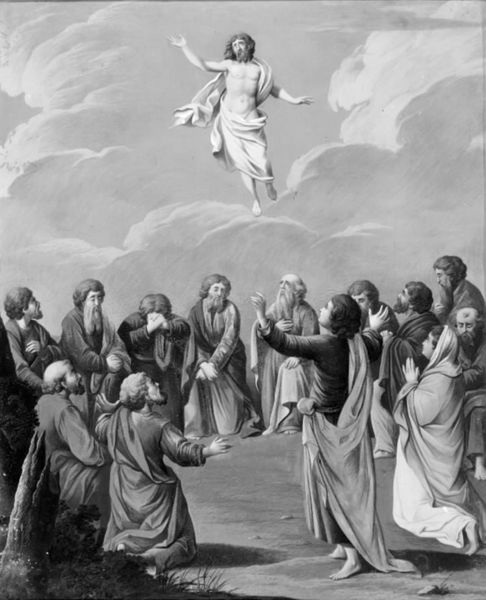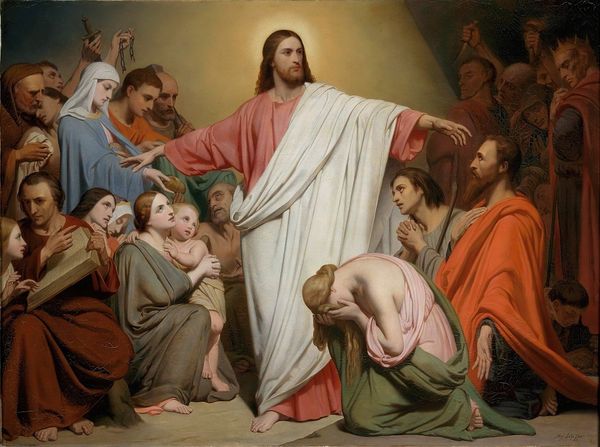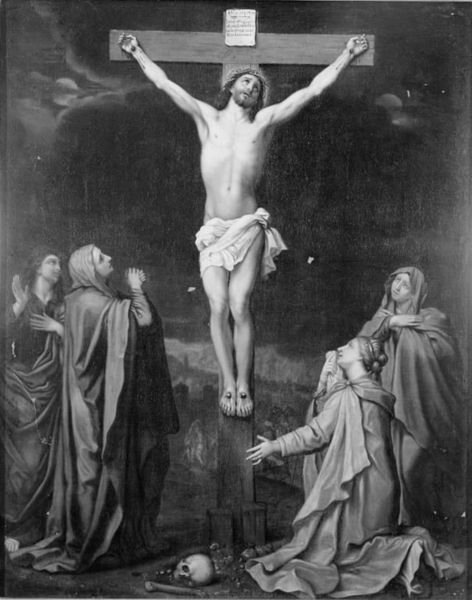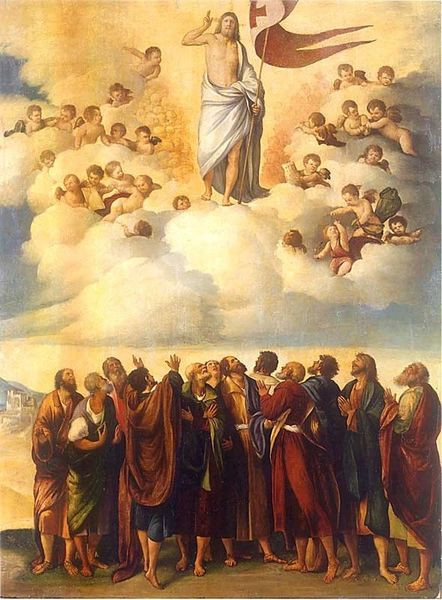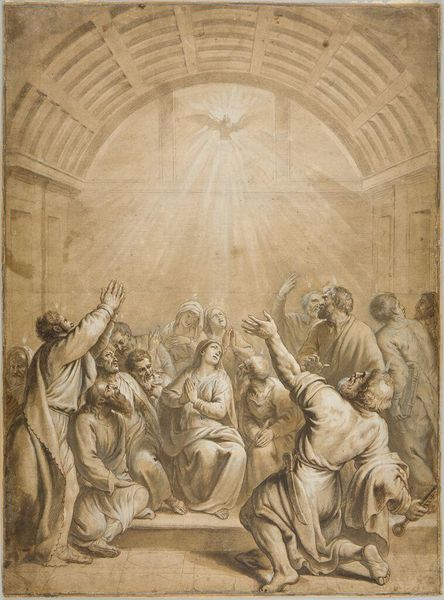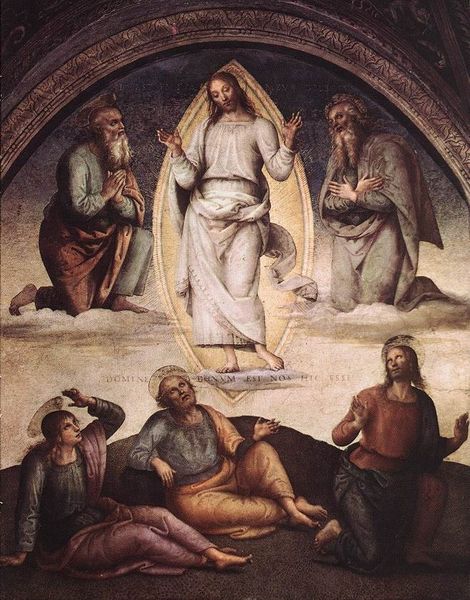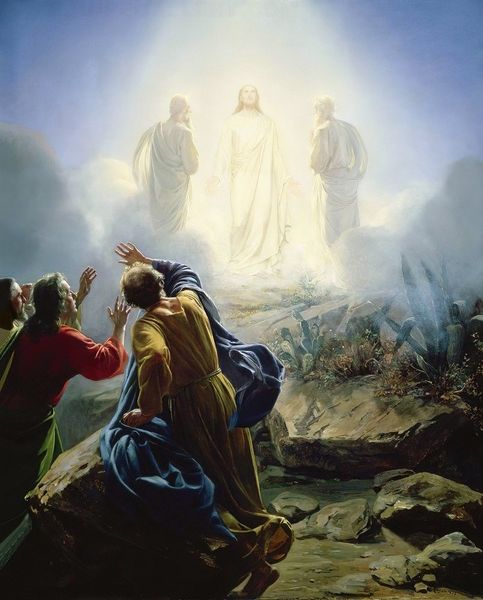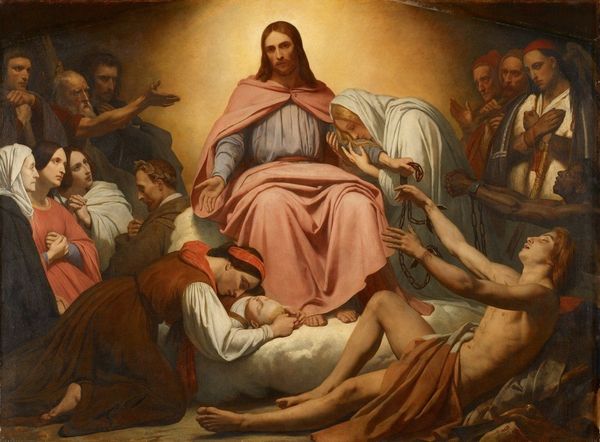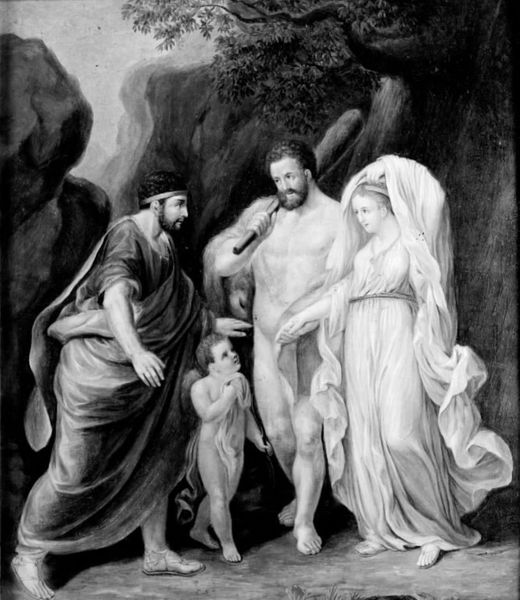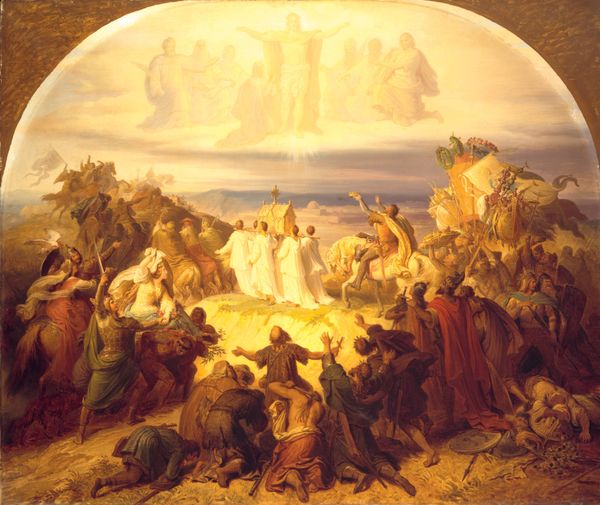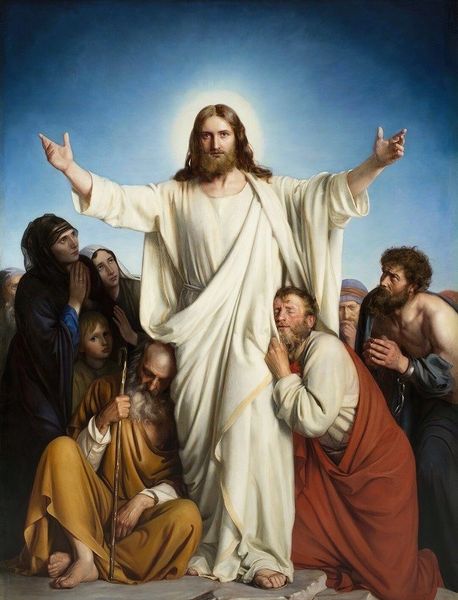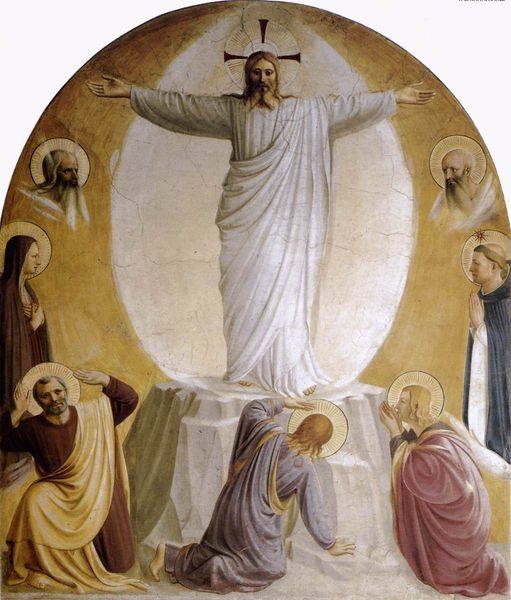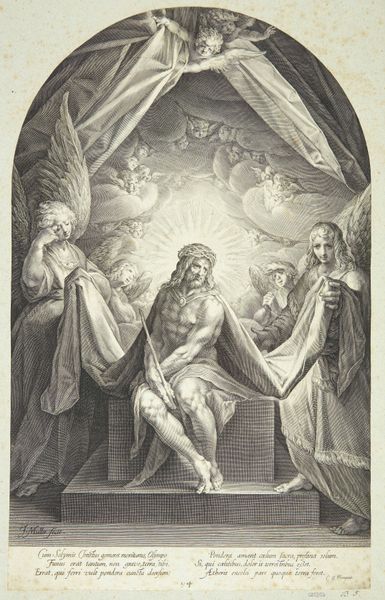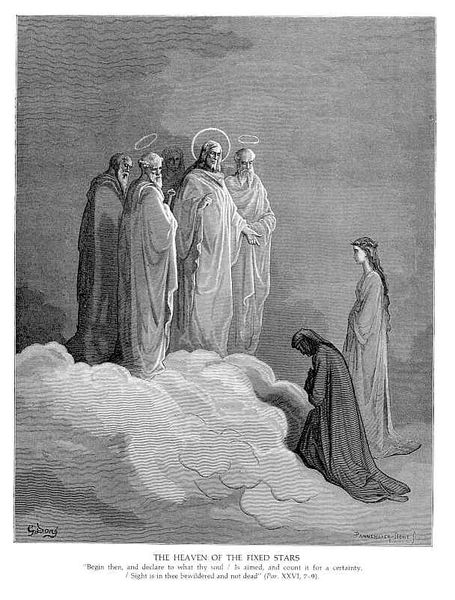
tempera, painting, gouache, paper
#
narrative-art
#
tempera
#
painting
#
gouache
#
charcoal drawing
#
figuration
#
paper
#
surrealism
#
portrait drawing
#
history-painting
#
charcoal
Dimensions: 340 mm (height) x 260 mm (width) (bladmaal)
Curator: W.A. Müller’s "Transfigurationen," created between 1748 and 1816 using tempera and gouache on paper, strikes me immediately with its ethereal, dreamlike quality. What is your first impression? Editor: Well, I'm drawn to the social and political implications of religious representation at the time. It presents a very idealized view, clearly designed to reinforce specific power structures. Curator: Interesting point. From a purely material perspective, the combination of tempera and gouache gives the work a unique texture. I wonder how Müller sourced his pigments, and what kind of labor was involved in grinding and mixing them. Editor: Right, and that production is tied into access. Who got to see images like this, and what messages were they absorbing about hierarchy and divine right? We have to acknowledge that depictions of spiritual transcendence often serve earthly agendas. Curator: Precisely. How does the narrative influence production itself? We can ponder if there was an accessibility of specific paper stocks that shaped the final outcome as well as influence painting application techniques such as layering for better visual outcomes? Editor: Absolutely, thinking about Müller’s world, the dominant patriarchal structure heavily influences the figures' representations in this artwork. Moses' powerful presence reflects that while the witnesses cower in a very vulnerable pose, illustrating power imbalances inherent to the social order, right? Curator: It brings to mind the availability and price fluctuation of various types of gouache during that time impacting affordability among artists working for nobility versus common patronage gigs. It begs wondering if cost constraints played factor dictating scale or size limitations Editor: That economic element of artistic production definitely intersects with questions about access, privilege, and cultural narratives. What stories were suppressed and whose perspectives are rendered invisible in these kinds of works. Curator: So, looking at Müller’s work, we see it not only for its aesthetic or narrative qualities, but as a document embedded within specific historical and material conditions. Editor: It allows us to appreciate that these artworks often function to reproduce certain norms. So we can better understand power as both constructed and maintained through art. Curator: Absolutely. By studying its creation and historical setting, we get greater awareness and understanding! Editor: Agreed. Seeing how artwork functions within broader frameworks of social control is important for awareness.
Comments
No comments
Be the first to comment and join the conversation on the ultimate creative platform.
